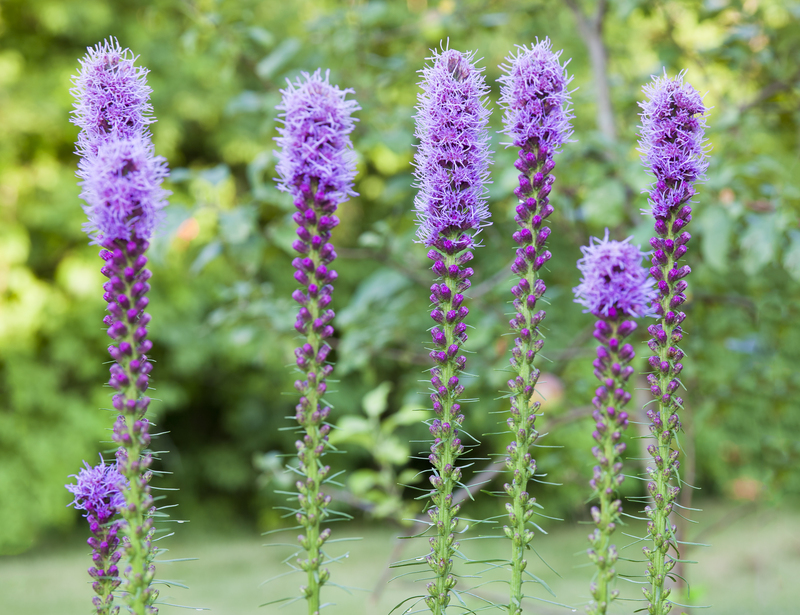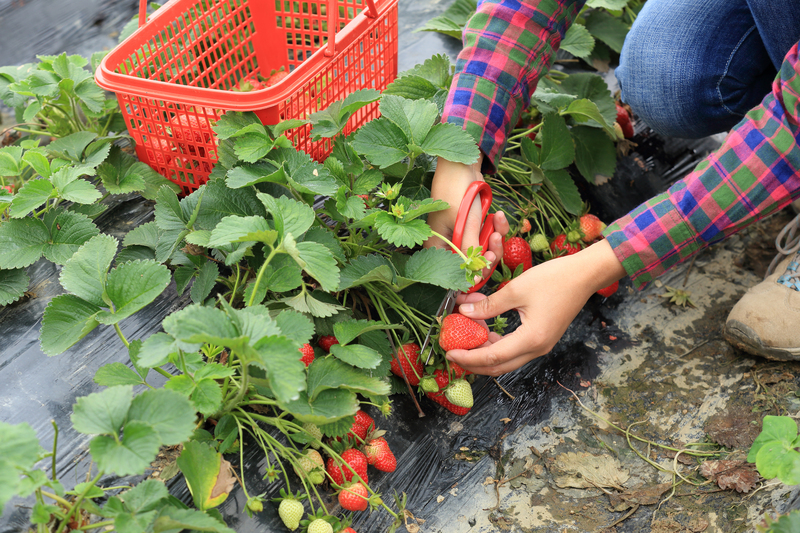Preventing Lawn Damage from Summer Drought: Tips and Techniques
When the hot, dry months arrive, maintaining a lush, green lawn can become a real challenge. Summer drought conditions threaten your turf's health, turning once-vibrant landscapes into brown, brittle patches. However, with the right strategies, you can protect your lawn from drought damage and preserve its verdant appearance all season long. This comprehensive guide will explore proven tips and techniques for preventing lawn damage during summer drought, helping you achieve a resilient and drought-proof yard.

Table of Contents
- Understanding Lawn Damage from Drought
- Choosing Drought-Tolerant Grasses
- Smart Watering Techniques for Drought Prevention
- Mowing Best Practices During Summer Drought
- Soil Health and Mulching Strategies
- Best Lawn Care Products for Drought Protection
- Preventative Measures and Long-Term Steps
- Common Mistakes to Avoid During Summer Drought
- Frequently Asked Questions
Understanding Lawn Damage from Drought
Summer drought stress can severely impact your lawn's health. Without adequate moisture, grass struggles to perform essential functions such as photosynthesis and nutrient uptake. This results in:
- Browning: Lawns turn yellow or brown as the grass goes into dormancy or dies.
- Thinning: Grass blades become sparse, leaving soil exposed to weeds and erosion.
- Root Damage: Shallow or weakened roots struggle to absorb water once drought ends.
- Pest and Disease Vulnerability: Weakened lawns invite pests and fungal infections.
How Does Drought Affect Different Grass Types?
Not all lawns react equally to drought. Cool-season grasses like Kentucky bluegrass are more susceptible to heat and drought stress, while warm-season varieties like Bermuda and Zoysia are more tolerant.
Choosing Drought-Tolerant Grasses
An effective way to prevent serious lawn drought damage is to strategically select or overseed with grasses bred for dry conditions. Look for these characteristics:
- Deep root systems for efficient water absorption
- Heat tolerance for surviving high temperatures
- Slow growth rates for less frequent mowing and watering
Best Drought-Resistant Grass Species
- Bermuda Grass: Short, tough, and thrives in hot climates.
- Zoysia Grass: Dense root systems and slow growth.
- Buffalo Grass: Native, low-maintenance, and highly drought-resistant.
- Tall Fescue: Deep roots make it more drought-tolerant among cool-season grasses.
- St. Augustine Grass: Performs well in humid and dry conditions.
Overseeding with these varieties enhances your turf's resilience.
Smart Watering Techniques for Drought Prevention
Watering wisely is the cornerstone of preventing lawn damage during drought. Many homeowners underestimate the importance of timing, volume, and method.
Implementing an Effective Watering Schedule
- Water Early: Best to water before 10 a.m. to minimize evaporation.
- Deep and Infrequent: Water deeply (6-8 inches into the soil) once or twice a week, rather than daily shallow watering.
- Monitor Moisture: Use a soil moisture meter to gauge real hydration needs.
- Avoid Runoff: Water in cycles to allow soil absorption and prevent waste.
Tip: Place an empty can on your lawn while sprinkling. When it's filled with about 1 inch of water, you've reached the ideal depth for most grasses.
Efficient Irrigation Methods
- Drip Irrigation: Targets water directly to the roots, reducing evaporation.
- Soaker Hoses: Flexible option for even distribution.
- Smart Sprinkler Controllers: Adjust watering based on soil moisture and weather forecasts.
Using water responsibly is not only eco-friendly but also critical in drought-proofing your lawn.
Mowing Best Practices During Summer Drought
Proper mowing can mean the difference between surviving or succumbing to summer drought. The wrong height or dull mower blades can stress grass unnecessarily.
Recommended Mowing Techniques
- Keep It Long: Set mower blades high (3-4 inches) to promote deep roots and shade soil.
- Sharpen Mower Blades: Dull blades tear grass, making it more susceptible to drought damage.
- Mulch Grass Clippings: Leave small clippings on lawn to conserve moisture and add nutrients.
- Avoid Mowing Strain: Do not mow lawns that appear drought-stressed or dormant.
Tip: Never remove more than one-third of the grass blade height in a single mowing session; this helps prevent shock and moisture loss.
Soil Health and Mulching Strategies
Healthy soil rich in organic matter helps retain moisture and delivers vital nutrients. Proper mulching also shields grass roots during heatwaves and dry periods.
How to Improve Lawn Soil for Drought Resistance
- Core Aeration: Loosens compacted soil, improves water and air movement.
- Topdressing: Add a thin layer of compost to enhance moisture-holding capacity.
- pH Adjustment: Maintain soil pH between 6.0-7.0 (test every spring/fall).
Benefits of Organic Mulch
- Moisture Retention: Slows evaporation and keeps roots cool.
- Weed Suppression: Mulch blankets discourage weed germination.
- Enriched Soil: Decomposing mulch adds organic nutrients.
Mulch around lawn borders and landscaping beds to further reduce moisture loss.
Best Lawn Care Products for Drought Protection
The right lawn care products can act as a line of defense against summer drought stress.
Top Products to Consider
- Soil Wetting Agents: Help water penetrate compacted, dry soils more effectively.
- Eco-Friendly Lawn Fertilizer: Low-nitrogen, slow-release formulas reduce burn risk and strengthen roots.
- Moisture-Retaining Polymers: These gels or granules absorb and slowly release water to plant roots.
- Natural Lawn Tonics: Use homemade blends (Epsom salt, soda, or liquid seaweed solutions) to boost stress resistance.
Important: Always follow manufacturer instructions to avoid over-application.
Preventative Measures and Long-Term Steps
The most successful lawn drought mitigation strategies are preventative and sustainable. By thinking proactively, you prepare your yard to resist harsh summers with greater ease.
Year-Round Lawn Care for Drought Resistance
- Regular Aeration and Dethatching: Minimizes compaction and allows deeper root growth.
- Seasonal Overseeding: Thicken lawns with drought-resistant species each fall.
- Proper Fertilization: Fertilize in spring and fall, avoiding high-nitrogen products before peak heat.
- Integrated Pest Management: Keep pests and diseases at bay to prevent lawn stress.
- Reduce Lawn Footprint: Convert less-used areas into drought-tolerant gardens or hardscapes.
Consider installing rain barrels or a smart irrigation system for efficient water use all year.
Common Mistakes to Avoid During Summer Drought
Even the best-intentioned homeowners can accidentally increase the risk of drought damage to their lawn. Stay vigilant against these common errors:
- Overwatering or underwatering: Both can stress grass and weaken roots.
- Frequent shallow watering: Encourages roots to remain near the surface, making them more susceptible to drought.
- Cutting grass too short: Exposes roots to sun and heat, increasing evaporation.
- Ignoring soil health: Neglected soil dries out faster and fails to retain nutrients.
- Applying fertilizer during peak drought: Can burn grass or promote weak, unsustainable growth.
Recognizing and correcting these mistakes is central to successful summer lawn drought prevention.
Frequently Asked Questions
How do I know if my lawn is drought-stressed or dormant?
Dormant lawns are brown yet still have living crowns and healthy roots; blades pull back cleanly. A drought-stressed lawn may show wilting, curling, or a blue-gray color before browning, and grass blades break instead of bend.
Is it better to let my lawn go dormant during summer drought?
It can be, especially for cool-season grasses. Limit mowing and apply 1/2 inch of water every 3-4 weeks to keep roots alive until the drought passes.
Should I fertilize my lawn during a summer drought?
No. Fertilizing during drought encourages weak leaf growth and can burn grass. Wait until rains return and temperatures moderate.
What is the best time to water my lawn in the summer?
Early morning is best--soil absorbs moisture before the sun rises high, reducing evaporation and fungal risk.

Protect Your Lawn from Summer Drought Damage
Preserving a green and healthy lawn during summer drought involves proactive planning, smart watering, proper maintenance, and choosing resilient grass varieties. By implementing these lawn drought prevention tips and techniques, you can ensure your turf survives and thrives through even the harshest heatwaves. Remember, every lawn is unique--adapt our strategies to your region and grass type, and consult a local expert for tailored advice if needed.
Armed with knowledge and care, your lawn can weather any drought and remain the envy of the neighborhood year after year.